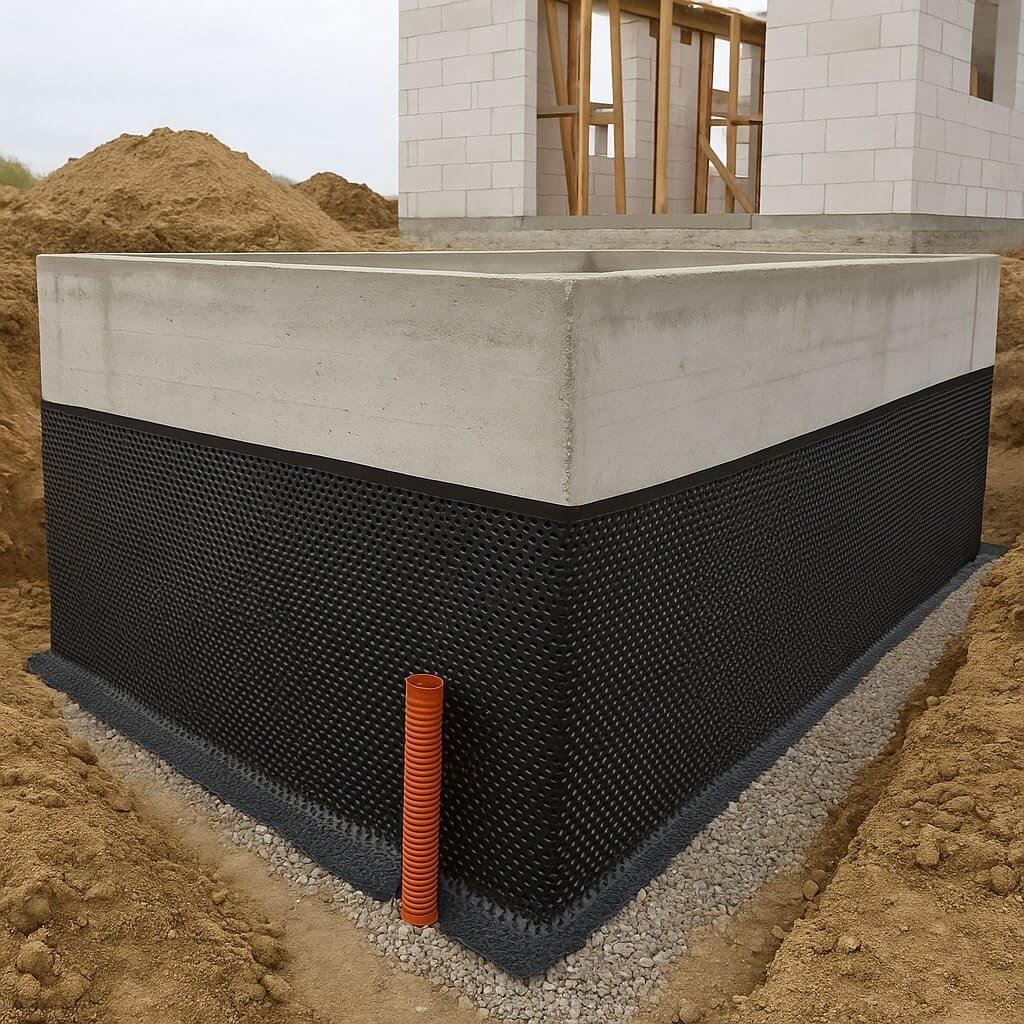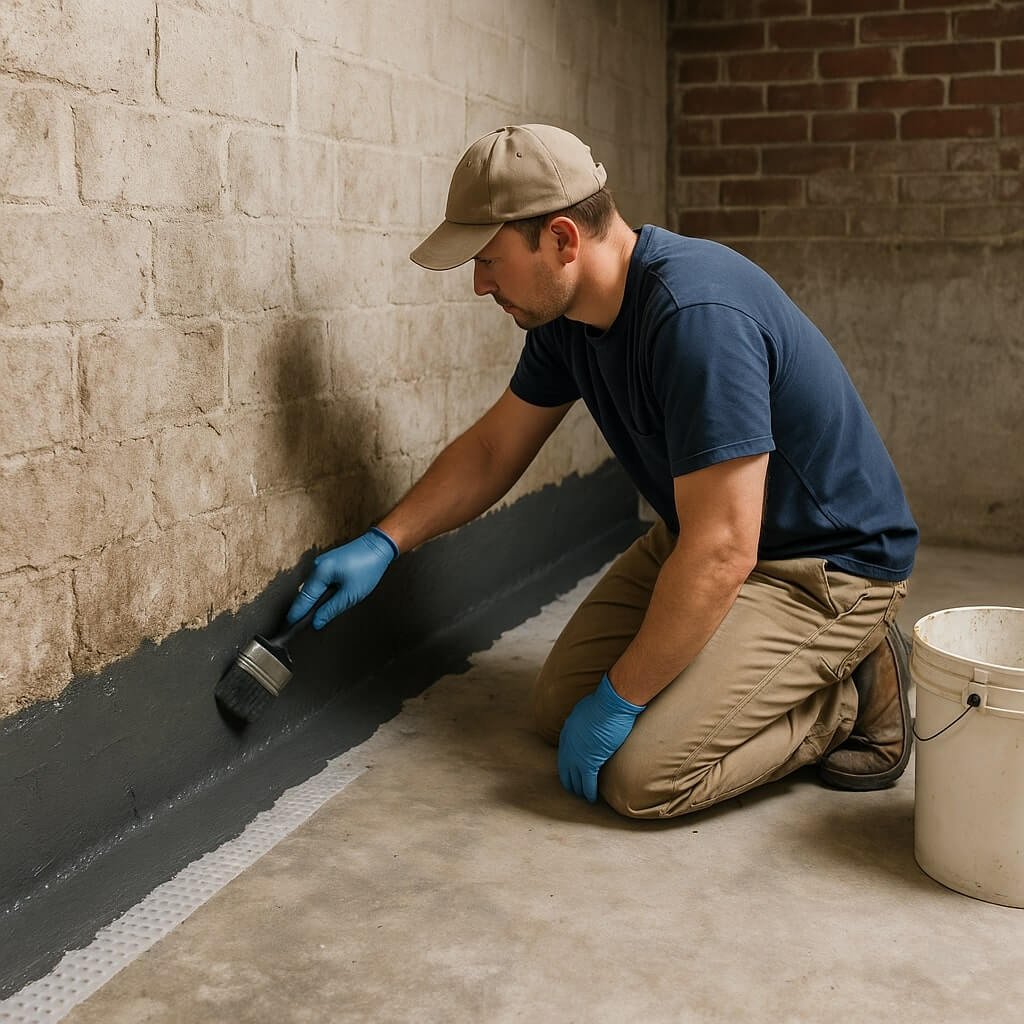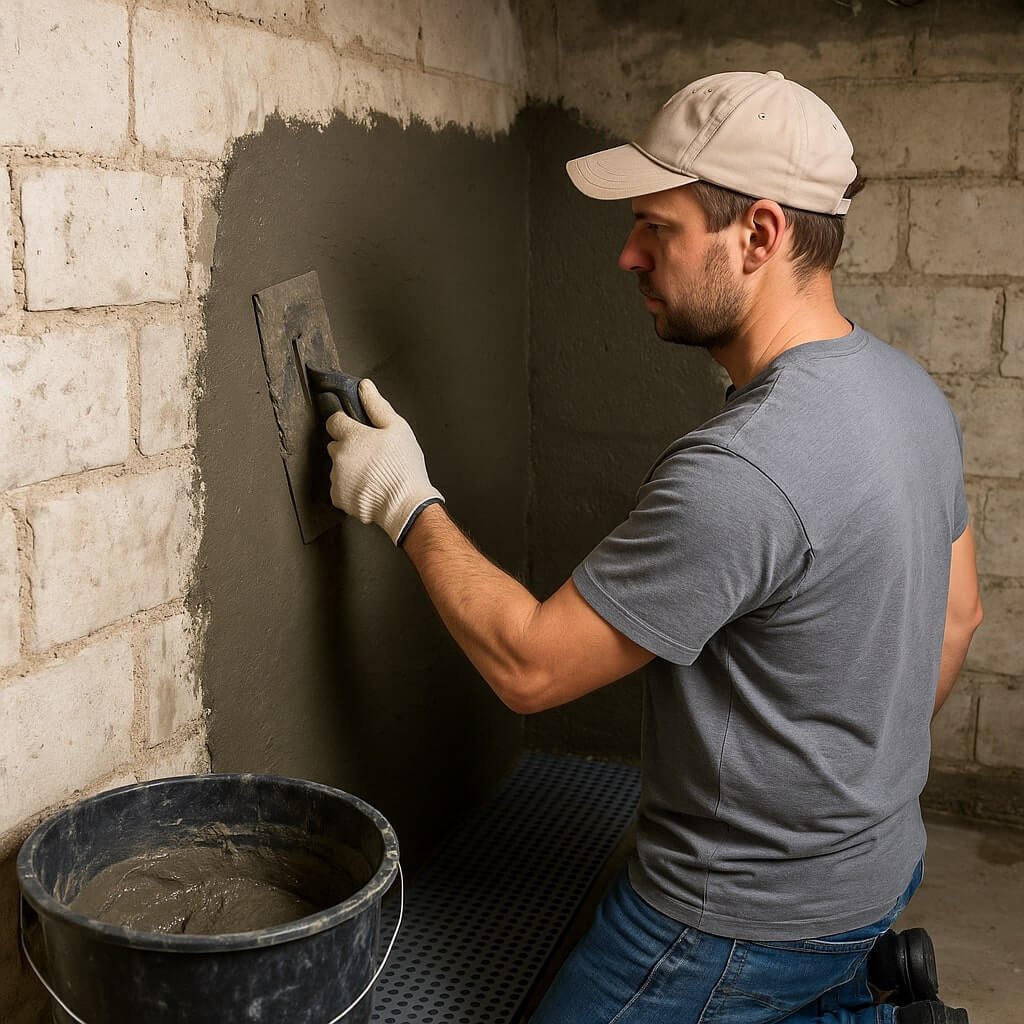New build basement waterproofing is essential for preventing water intrusion during construction. By implementing advanced moisture barriers and drainage systems, you can protect your property’s structural integrity and enhance indoor air quality. Understanding the common causes of basement water issues and effective waterproofing methods guarantees a safer environment. As you explore the critical role of these solutions, you’ll discover how they can positively impact your home’s value and livability.
Key Takeaways
- New build basement waterproofing involves applying specialized materials to create a moisture barrier against water intrusion during construction.
- It is crucial for preventing future water damage, mold growth, and structural issues in the basement.
- Effective waterproofing enhances property value by safeguarding the foundation and ensuring a dry living space.
- Incorporating drainage systems and waterproof membranes during construction reduces long-term repair costs associated with water damage.
- A well-waterproofed basement improves indoor air quality and overall comfort, benefiting residents’ health and well-being.
Understanding Basement Waterproofing
When you consider the importance of maintaining a dry basement, understanding basement waterproofing becomes vital.
Effective waterproofing involves using specialized waterproofing materials designed to prevent water intrusion and manage basement humidity. These materials can include membranes, sealants, and drainage systems that work together to create a barrier against moisture.
Proper installation is essential, as even small gaps can lead to significant issues over time. By actively managing basement humidity with the right waterproofing solutions, you not only protect your home’s foundation but also improve indoor air quality, preventing mold growth and enhancing overall living conditions.
Common Causes of Basement Water Intrusion
Basement water intrusion often results from several critical factors.
Poor drainage systems can lead to water accumulation around your foundation, while foundation cracks allow moisture to seep in.
Additionally, a high water table can exacerbate these issues, increasing the risk of flooding in your basement.
Poor Drainage Systems
If your property has inadequate drainage systems, you’re likely to face significant issues with water intrusion in the basement.
Poorly designed or damaged drainage can lead to water pooling around your foundation, increasing the risk of leaks and dampness.
Effective water management is essential; it includes proper grading, functional gutters, and downspouts that direct water away from your home.
Without reliable drainage solutions, groundwater can easily seep into your basement, compromising its integrity and potentially causing mold growth.
Addressing these drainage issues promptly will help protect your property and maintain a dry, healthy living environment.
Foundation Cracks
Although they may seem minor, foundation cracks can lead to significant water intrusion issues in your basement. These cracks often arise from settling, temperature fluctuations, or inadequate drainage.
When water seeps through, it compromises your home’s structural integrity and encourages mold growth. To mitigate these risks, prompt foundation repair is essential.
Addressing the cracks not only prevents further damage but also enhances your moisture control efforts. By sealing these openings and ensuring proper drainage, you can safeguard your basement against unwanted water.
High Water Table
When a high water table exists, it greatly increases the risk of water intrusion in your home’s lower levels.
The high water table effects can lead to hydrostatic pressure, forcing groundwater into cracks and seams in your basement. This scenario can exacerbate moisture issues, mold growth, and structural damage if not addressed.
Effective groundwater management is essential; consider installing proper drainage systems and waterproofing solutions to mitigate risks.
Regular monitoring of the water table levels and ensuring your landscaping directs water away from your foundation can also help protect your home from potential water intrusion problems associated with a high water table.
Key Methods of New Build Basement Waterproofing
Effective basement waterproofing is vital for new builds, as it prevents water intrusion and structural damage.
One key method involves the installation of waterproof membranes, which create a barrier against moisture. These membranes can be applied to both interior and exterior surfaces, ensuring thorough protection.
Additionally, incorporating sump pumps is essential; they actively remove any water that accumulates, maintaining a dry environment.
When these systems are used together, they greatly reduce the risk of flooding and mold growth, preserving your investment.
Prioritizing these methods during construction will enhance the longevity and safety of your basement.
The Role of Drainage Systems
Drainage systems are essential for effective basement waterproofing, as they manage water flow and prevent saturation around your foundation.
You’ll need to evaluate various types, installation techniques, and ongoing maintenance practices to guarantee peak performance.
Understanding these components will help you safeguard your investment and maintain a dry, functional basement.
Types of Drainage Systems
While you may not think about it often, the type of drainage system you choose plays an essential role in basement waterproofing. Understanding different drainage types is important for effective moisture management.
Interior drainage systems collect water from within the basement, while exterior systems redirect water away from your foundation. French drains are popular for their efficiency in handling water flow.
The right system enhances overall system effectiveness, reducing the risk of structural damage. When selecting a drainage system, consider your property’s specific needs to guarantee peak performance and longevity in protecting your basement from water intrusion.
Installation Techniques Overview
When installing a basement waterproofing system, understanding the role of drainage systems is essential for ensuring long-term effectiveness.
Effective installation techniques include proper grading around your foundation and integrating perimeter drains to manage water flow.
You’ll want to utilize high-quality waterproofing materials like membranes and sealants to complement your drainage solutions.
Installing sump pumps can also enhance your system, allowing for the efficient removal of any accumulated water.
Maintenance and Monitoring Practices
To maintain an effective basement waterproofing system, regular monitoring of your drainage components is essential.
Conduct regular inspections to verify that gutters, downspouts, and drainage pipes are clear of debris and functioning properly. Any blockage can lead to water accumulation, compromising your waterproofing efforts.
Implement moisture monitoring systems to detect humidity levels, allowing you to identify potential leaks early. If moisture levels rise, investigate the source immediately to prevent damage.
By prioritizing these maintenance practices, you can enhance the longevity of your waterproofing system and protect your basement from water intrusion.
Stay proactive to guarantee peak performance.
Membrane Waterproofing Solutions
Membrane waterproofing solutions offer a reliable barrier against water intrusion, ensuring that your new build basement remains dry and structurally sound.
You can choose from various membrane types, including sheet membranes and liquid-applied membranes, each providing unique advantages.
Sheet membranes are easy to install and offer excellent durability, while liquid-applied options conform to complex shapes and surfaces.
The waterproofing benefits of these membranes include preventing mold growth, preserving structural integrity, and enhancing property value.
Importance of Proper Ventilation
While waterproofing your new build basement is essential, proper ventilation is equally important for maintaining a healthy environment.
Adequate ventilation systems guarantee efficient air circulation, preventing moisture buildup that can lead to mold growth and structural damage. Without proper airflow, stagnant air can harbor pollutants and allergens, compromising indoor air quality.
Installing ventilation systems, such as exhaust fans or air exchangers, facilitates the exchange of stale air with fresh air, enhancing comfort and safety.
Prioritizing ventilation in your basement not only complements waterproofing efforts but also contributes markedly to the overall longevity and livability of your home.
Benefits of Basement Waterproofing
Effective basement waterproofing offers numerous advantages that enhance both the structure and functionality of your home. First, it provides essential property protection against water damage, mold, and rot. This safeguard leads to significant cost savings on repairs and maintenance over time. Additionally, a dry basement can be transformed into usable space, adding value to your living area.
| Benefit | Description |
|---|---|
| Cost Savings | Reduces potential repair expenses |
| Property Protection | Shields against moisture-related damage |
| Increased Usability | Allows for functional living or storage space |
| Enhanced Comfort | Improves indoor air quality and comfort |
Impact on Property Value
Investing in basement waterproofing can greatly enhance your property’s value, as potential buyers often prioritize homes with a dry and well-maintained foundation.
Investing in basement waterproofing boosts property value, attracting buyers who prioritize a dry, well-maintained foundation.
A waterproofed basement not only reduces the risk of structural damage but also positively influences property appraisal. When you guarantee a moisture-free environment, you’re appealing to market demand, as buyers are increasingly aware of the importance of a sound foundation.
This proactive measure can make your property more competitive, leading to higher offers and quicker sales.
Ultimately, a dry basement isn’t just a comfort; it’s a smart financial investment that can yield significant returns.
Health Implications of a Dry Basement
A dry basement greatly contributes to a healthier living environment. By ensuring effective moisture control, you mitigate various health hazards that can arise from damp conditions.
Here are some key health benefits of a dry basement:
- Reduces mold growth, preventing respiratory issues.
- Deters pests like rodents and insects, which can carry diseases.
- Lowers humidity levels, improving indoor air quality.
- Minimizes allergens and irritants, benefiting allergy sufferers.
- Enhances overall comfort, promoting better mental well-being.
Investing in basement waterproofing is essential for maintaining a safe and healthy home.
Your well-being depends on it.
Conclusion
To summarize, investing in new build basement waterproofing is essential for safeguarding your property against water intrusion. By implementing advanced moisture barriers and effective drainage systems, you guarantee the longevity of your home and enhance its value. Proper ventilation further contributes to a healthier living environment, reducing the risk of mold and improving indoor air quality. Prioritizing these waterproofing measures not only protects your investment but also creates a comfortable and functional space for years to come.




